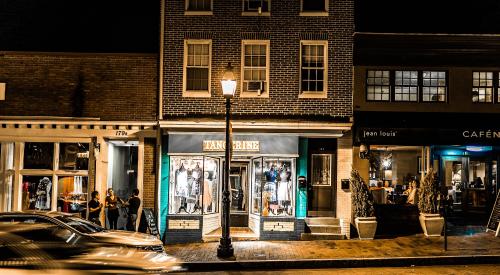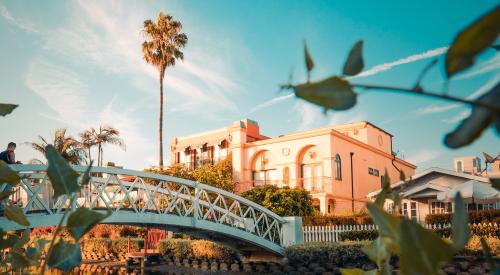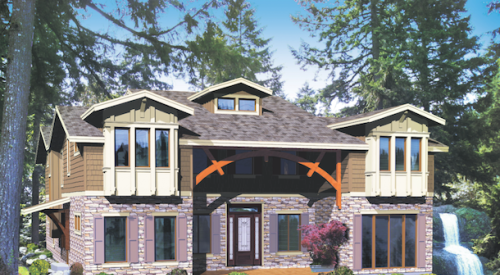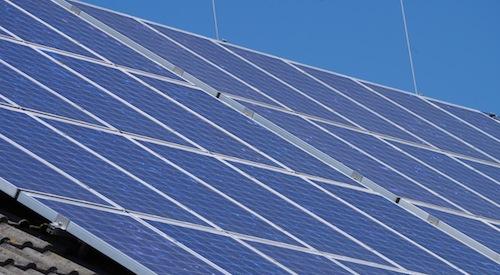| The United States Green Building Council (USGBC) is creating LEED Residential, the first national residential green building standard.
|
As reported in Upfront in July, there is a movement afoot to develop an overarching standard for green building. The ultimate goal of this process, say its organizers, is nothing short of market transformation.
They are at the beginning of doing just that by establishing a rating system for the residential building industry that will not only define what it means to "build green", but also provide leaders in the building industry the opportunity to receive a national green building certification for their projects.
Referred to as LEED Residential, or LEED-R (LEED is short for Leadership in Energy and Environmental Design), the rating system is being developed by the United States Green Building Council (USGBC). USGBC is a non-profit organization made up of builders, architects, developers, building owners, consultants, building scientists and government officials.
LEED-R is modeled after its counterpart in the commercial sector, LEED Commercial, or LEED-C, which has had unbelievable success in the few months it’s been available to commercial builders. In a state of continual evolution -- as is the green building movement itself -- LEED-C is in its second version, with version three already in development. Not only are people on the commercial side interested, says Bill Reed of USGBC’s LEED Steering Committee, but residential builders are now aware of the LEED rating systems as well.
With much of the basic structure for LEED-R fleshed out by its commercial building industry counterpart, the process is expected to move much more quickly than did LEED-C, which has been over four years in the making. In-person committee meetings, conference calls and e-mail exchanges thus far have gotten the rating system past the critical point; committee members have mapped out the basics for green specifications in four different categories: materials, indoor environmental quality (IEQ), energy efficiency and site design.
According to Marc Richmond-Powers, chair of the LEED Residential Committee, the aim of the voluntary rating system is prescriptive, rather than purely performance-based. That way builders can aim for a series of targets, but arrive at them in a way that best suits their business, knowledge of green building practices, customer demands, and often, geography and climate.
Building Process
Early last month at a charette in Racine, Wis., LEED-R committee members met for three days to hone specifications in each category and compile reference materials on recognized performance measurements and strategies for implementation. They also created a timeline for the rest of the project and began sorting out how the often overlapping components of each category fit into the whole.
What emerged from the charette, says Reed, is a "pre-alpha version" of the LEED-R rating system. From there, it goes to the LEED-R Steering Committee (many of whom are veterans, in some capacity, of the LEED-C process) for review, feedback and resolution of conflicts to create the alpha and beta versions.
After further refinements and pilot projects with selected builders, the LEED-R committee plans to submit the system for ballot by the entire USGBC membership by June 2001. The balloting process may take some time and LEED-R is sure to go through several preliminary versions, but the first final version -- Version 1.0 -- could be on the market as early as the summer of 2001, according to Richmond-Powers.
However, he expects that LEED-R will exist in a constant state of evolution. "It has to constantly adjust to what the marketplace says and what the trends in the industry are. If we want to keep pushing the envelope and maintain the leadership of that system, it has to keep upgrading. We even do that with our residential program here in Austin. We’ve upgraded that three, almost four times already in eight years," says Richmond-Powers, who was instrumental in creating Austin’s built green program.
Market Acceptance
The LEED Residential rating system is not far from deployment, but the question is, are builders ready? Despite the growth of green building in the last few years -- due largely to the efforts of forward-thinking builders and the local programs in places like Austin, Denver and Seattle -- few mainstream builders have picked up the torch.
But, at least at first, LEED-R is not aimed at reaching purely mainstream builders. According to Richmond-Powers, this first national green building bar will be set high -- certification will be for leaders in the field, not for builders looking for a marketing angle. But certification is not the only goal -- awareness of green building, its benefits and its impact on the industry is important too.
"It’s not as scary as [builders] think," said Reed. "I hear it all the time -- builders saying the market’s not demanding it. [But] they’re not asking the right questions. It’s a cop-out -- what they are saying is that they don’t want change."
Proponents of green building say that change is imminent and builders have the choice to embrace it now, learn how to do it and use it as a way to differentiate their product from competitors. That, or they can risk waiting until change is no longer a choice and smart growth initiatives and local regulations make building the old-fashioned way a thing of the past.












